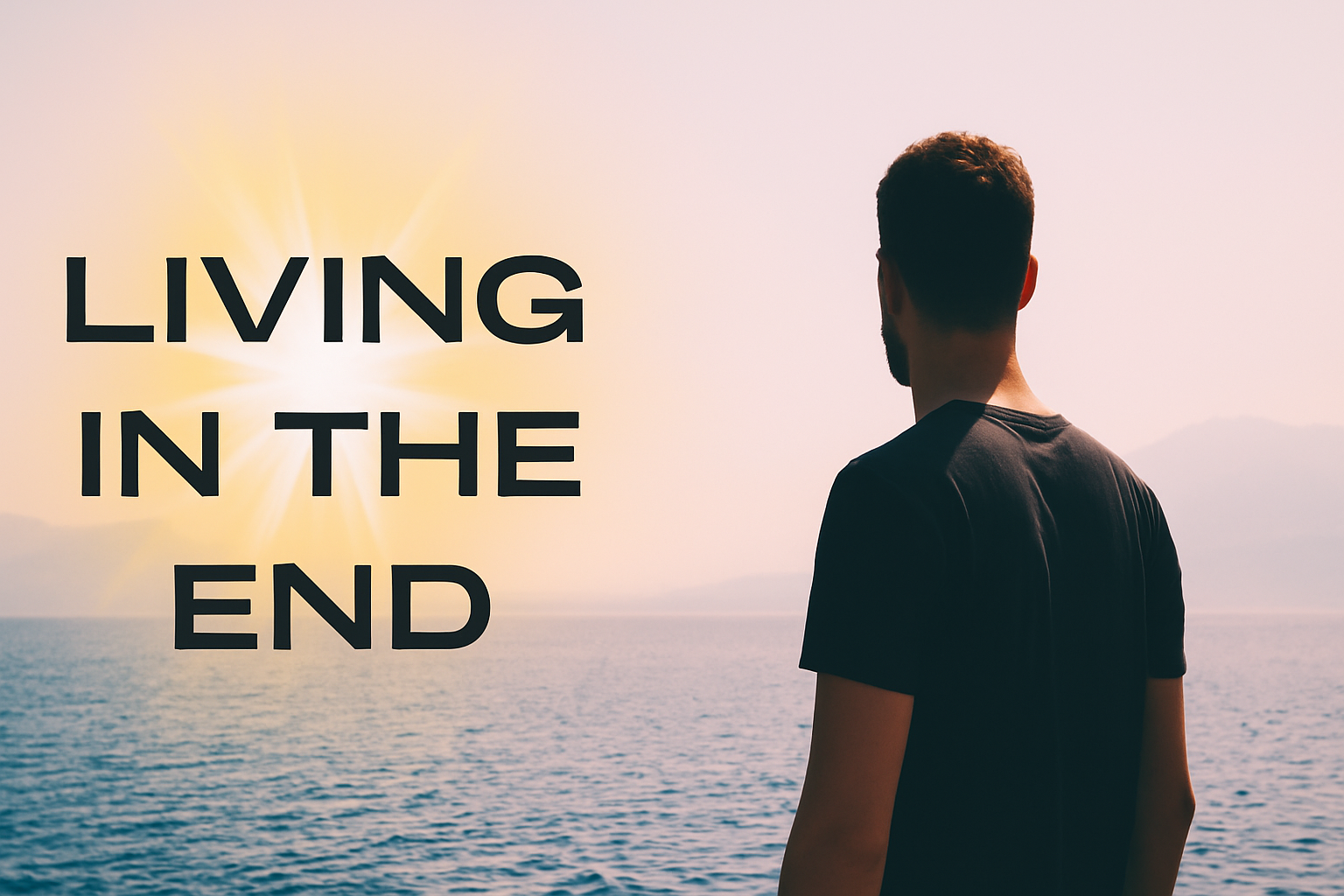Living in the End: My Personal Enlightenment
There’s a moment that happens sometimes, quietly and almost invisibly, where something you’ve heard a hundred times suddenly becomes something you understand.
For me, that moment came with the phrase “live in the end.” I had read it before. I nodded along. But until recently, I didn’t feel what it actually meant.
What started as a conversation about my own limiting beliefs led me into a deeper realization. I had been waiting to figure out the how before allowing myself to assume the what. I thought I needed clarity on every step of the process before I could claim the feeling of the outcome. But Neville wasn’t asking for a strategy. He was pointing to a state.
This post is about the shift that happened in me when I stopped treating “living in the end” like a mental concept and started using it as a way of being. If you’ve ever wrestled with overthinking, uncertainty, or hesitation before taking a leap, this is for you.
The real misunderstanding around “living in the end”
Most people treat manifestation like a checklist. Visualize. Affirm. Act as if. But they skip the most important part: assuming the end is already real.
Not someday. Not when the plan is figured out. Right now.
The problem is, we try to force the feeling without knowing what we’re actually assuming. We think we’re imagining success, but deep down we’re still questioning how it could happen. We’re carrying worry, doubt, or fear… and calling it belief.
That’s what I was doing without realizing it.
I thought I was aligning with the end, but I was still needing proof. I was trying to choose the right strategy before I gave myself permission to feel like it already worked. That hesitation, that internal wait-for-confirmation mindset, is the very thing that blocks the shift.
This matters because “living in the end” isn’t a technique. It’s a state of identity. If you can’t feel it now, you won’t create it later. The moment you become the version of you who already has it, everything starts to change.
What does it really mean to “live in the end”?
“Living in the end” means assuming the wish is already fulfilled. It’s not about hoping it will happen or pretending you’re close. It’s about stepping into the reality where it already has happened and moving from that identity.
Neville Goddard taught this as the core of all manifestation. The world reflects back not what we want, but who we are being. So the key is to become the version of yourself who already has the thing, not chase it, not wait for it.
This matters because most of us stay stuck in the “almost” zone. We think we’re doing the work, but we’re still subtly identifying with lack. We’re imagining what we want while emotionally reacting to the fact that it’s not here yet. That emotional contradiction keeps us in a holding pattern.
In real life, this shows up in small, subtle ways. You might say affirmations about wealth but still feel guilty spending money. You might visualize your dream job but still doubt whether you’re ready. You might decide to launch a product but delay because you can’t see the path yet.
It’s not that you’re doing it wrong. It’s that your inner state still reflects a future hope instead of a present fact.
Living in the end means taking the leap internally before the evidence shows up externally. It’s not blind faith. It’s embodied knowing.
A Moment That Changed How I Understood “Living in the End”
Not long ago, I had the idea to create something simple: a digital product that could help people identify and reframe their limiting beliefs. The concept felt powerful. I could see it helping people. I even imagined what the finished version might look like.
But the moment I sat down to work on it, doubts crept in.
Who’s going to buy this? How would I even sell it? What if someone else takes the idea and runs with it better than I can?
And just like that, I found myself in a familiar place. Not the end, but the middle. The uncertainty zone. The waiting room of almost.
Then I asked a simple question: What would the version of me who already created this product and impacted people’s lives feel like?
The answer wasn’t complicated. He would feel proud. At peace. Fulfilled. He wouldn’t be worrying about who might copy the idea or whether it would sell on day one. He would be grounded in the joy of having done the thing and knowing it was meant to help someone.
That shift changed everything. I stopped trying to control the path and started embodying the outcome.
That is what it means to live in the end. Not to fake it, but to become the person who no longer needs proof because they already know.
Key Concepts That Helped Me See More Clearly
Living in the End
This is a core idea from Neville Goddard. It means imagining and emotionally embodying the version of yourself who already has what you desire. You don’t wish, hope, or wait. You assume the state of the fulfilled version of you and live from that place internally.
The Middle
This is what most people unknowingly get stuck in. The middle is filled with questions, doubts, strategy overload, and constant searching for proof. It’s the place where people delay action until everything is “figured out.” But the middle keeps you from embodying the end, which is the key to changing your reality.
Limiting Beliefs
These are subconscious thoughts that quietly shape what we think is possible. They often sound reasonable, but they work like invisible barriers. Beliefs like “I’m not ready,” “This is too competitive,” or “It probably won’t work” are not facts — they’re stories we’ve internalized.
Assumption
To assume isn’t to pretend. It’s to accept something as already true and allow that truth to guide your thoughts and actions. When you live in the end, you assume the feeling of the wish fulfilled — and that assumption reshapes your self-concept, your decisions, and your results.
Where This Pattern Comes From
Most of us don’t realize just how early we inherited the habit of doubting ourselves. From childhood, we were trained to look outside of us for permission, validation, and proof.
We were praised for following the rules, not for trusting our inner voice. We were taught to wait until we had more information, more experience, more certainty. So we became excellent at hesitation. We learned to map everything out before taking action, to delay movement until we could be sure.
This pattern didn’t begin as a conscious choice. It came from our environments. Parents, teachers, and peers who meant well but projected their own fears. Systems that reward compliance over intuition. Cultures that celebrate results but ignore the quiet belief that makes results possible.
Over time, these influences shape our subconscious mind. We begin to assume that we have to work hard for clarity, earn our readiness, or achieve something before we feel worthy. This is how the middle takes hold. It becomes a pattern we fall into without realizing it.
Living in the end feels unfamiliar at first because it asks us to do the opposite of what we’ve been taught. But the more we understand where the pattern comes from, the easier it becomes to change it.
How to Shift from the Middle to the End
Here’s a simple framework to help you notice when you’re stuck in the “middle” and guide yourself back to living in the end. I provide journal prompts that invite you to slow down, observe your thoughts, and reconnect with your inner state. Writing it out makes it easier to spot the hidden assumptions that shape your reality and it gives you space to shift them with intention.
Step 1: Recognize the Middle
Notice when you feel uncertain, hesitant, or overwhelmed by planning. These are signs you’re mentally in the middle. Ask yourself, “Am I thinking from the end or about the end?”
Journal Prompt: What thoughts or feelings come up when I try to act on my desire? Do I feel like I need more proof, clarity, or validation first?
Step 2: Identify the Feeling of the Fulfilled You
Pause and imagine the version of you who already has the outcome. Not the moment it arrives but the calm after. The version of you who feels settled and proud. Ask, “What does that version of me feel like on an average day?”
Journal Prompt: If I already had what I wanted, how would I feel right now? How would I think, speak, or carry myself differently?
Step 3: Let That Feeling Lead
From that emotional state, ask: What small action would this version of me take today? Don’t try to reverse-engineer the entire path. Let the state guide the step.
Journal Prompt: What’s one thing I can do today from the energy of this fulfilled version of me?
Step 4: Stop Seeking Reassurance
You don’t need to monitor, check, or justify your progress. Your job isn’t to track the outcome. It’s to live from the assumption that it’s already done.
Journal Prompt: What would I stop doing if I truly believed it was already mine?
Step 5: Return to the End as Often as Needed
This isn’t about being perfect. You’ll slip back into the middle sometimes. That’s normal. Just notice it, and gently return to the end. It’s a muscle you’re building.
Journal Prompt: What helps me return to the feeling of “already done”? How can I make that part of my daily routine?
It’s Always Been True
Neville Goddard taught that imagination creates reality, and that real change begins by assuming the feeling of the wish fulfilled. That doesn’t mean pretending or forcing yourself to feel good all the time. It means recognizing that the version of you who already has what you want exists right now as a possible state of being.
You’re not building a new identity from scratch. You’re choosing to shift into a version of yourself that already knows this outcome is done.
When you live in the end, you stop looking to your current results for validation. You act and think from the version of you who already got what they came for. That internal shift is what allows external change to follow.
This is the core of Neville’s message: you are the operant power. You’re not waiting for life to happen to you. You’re the one who determines what version of yourself you live from and that choice shapes your future.
You don’t have to earn it. You just have to move into it.

